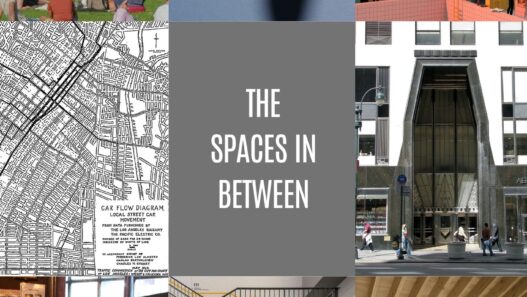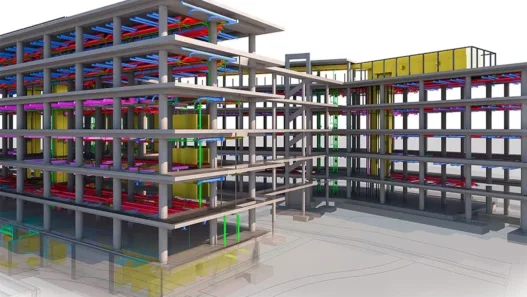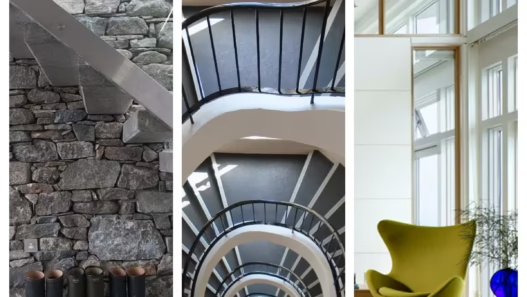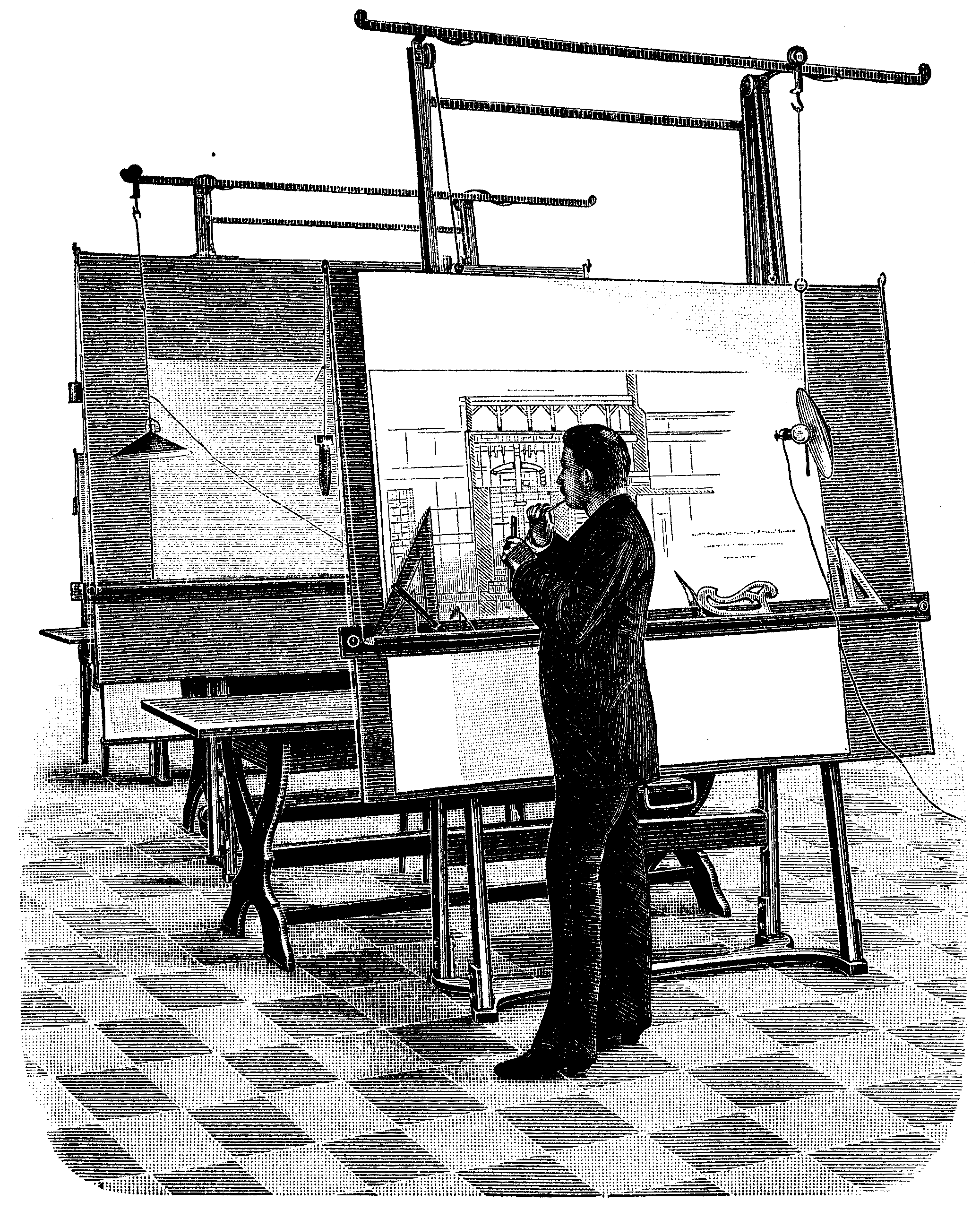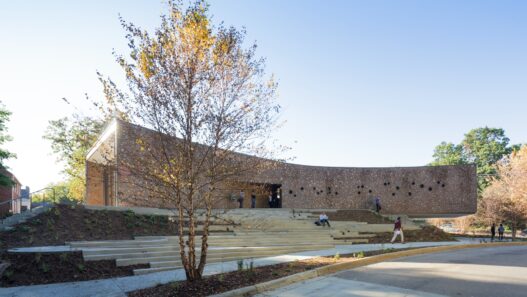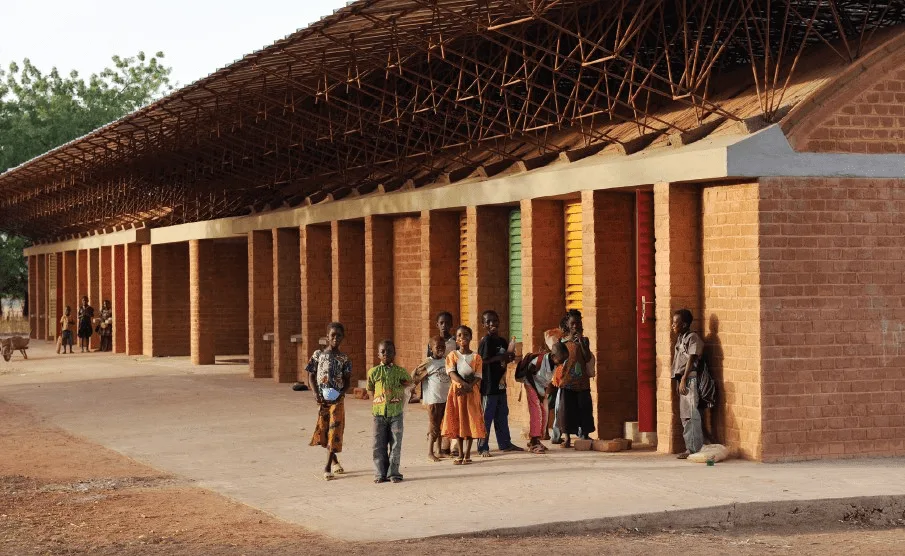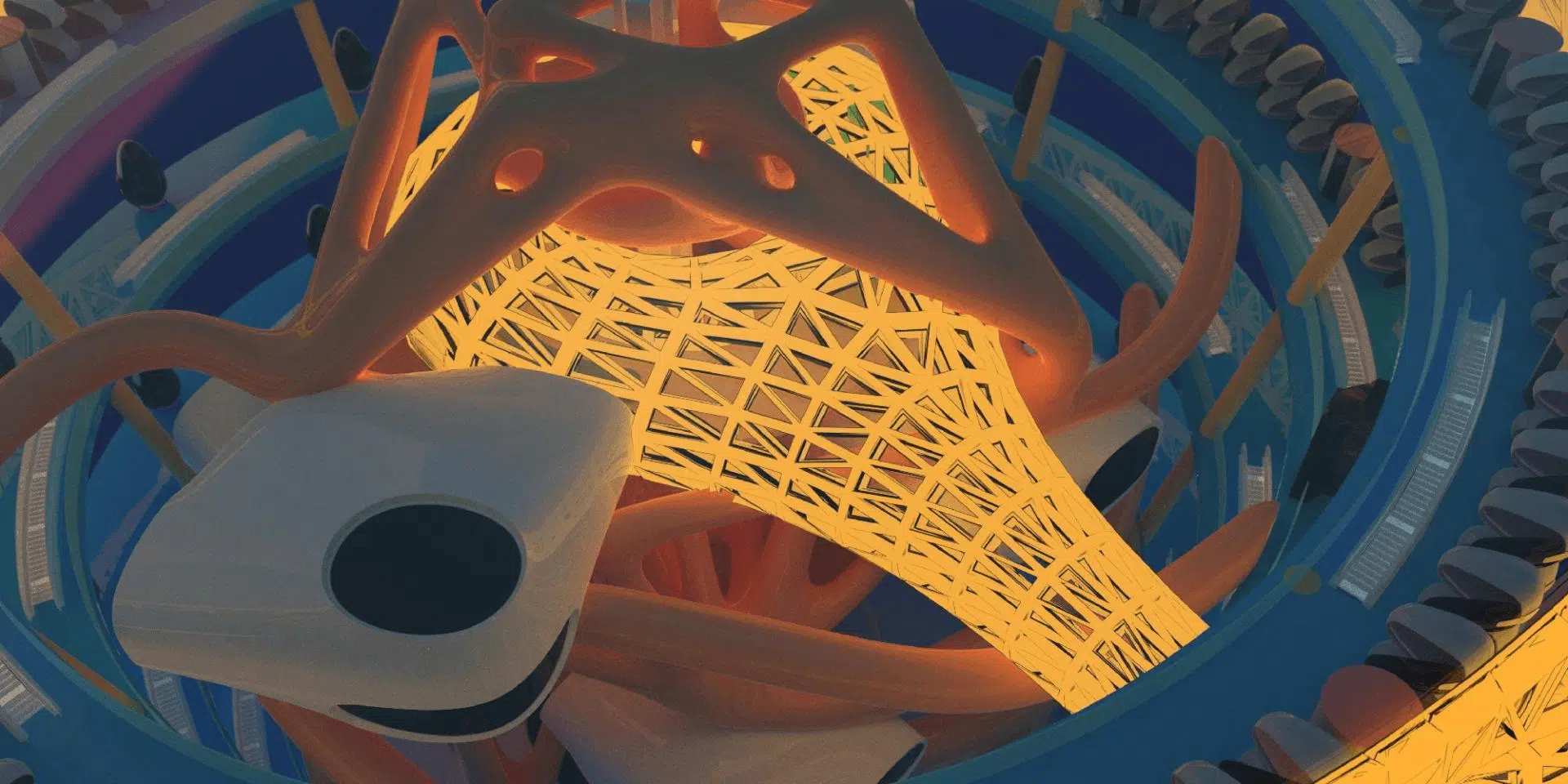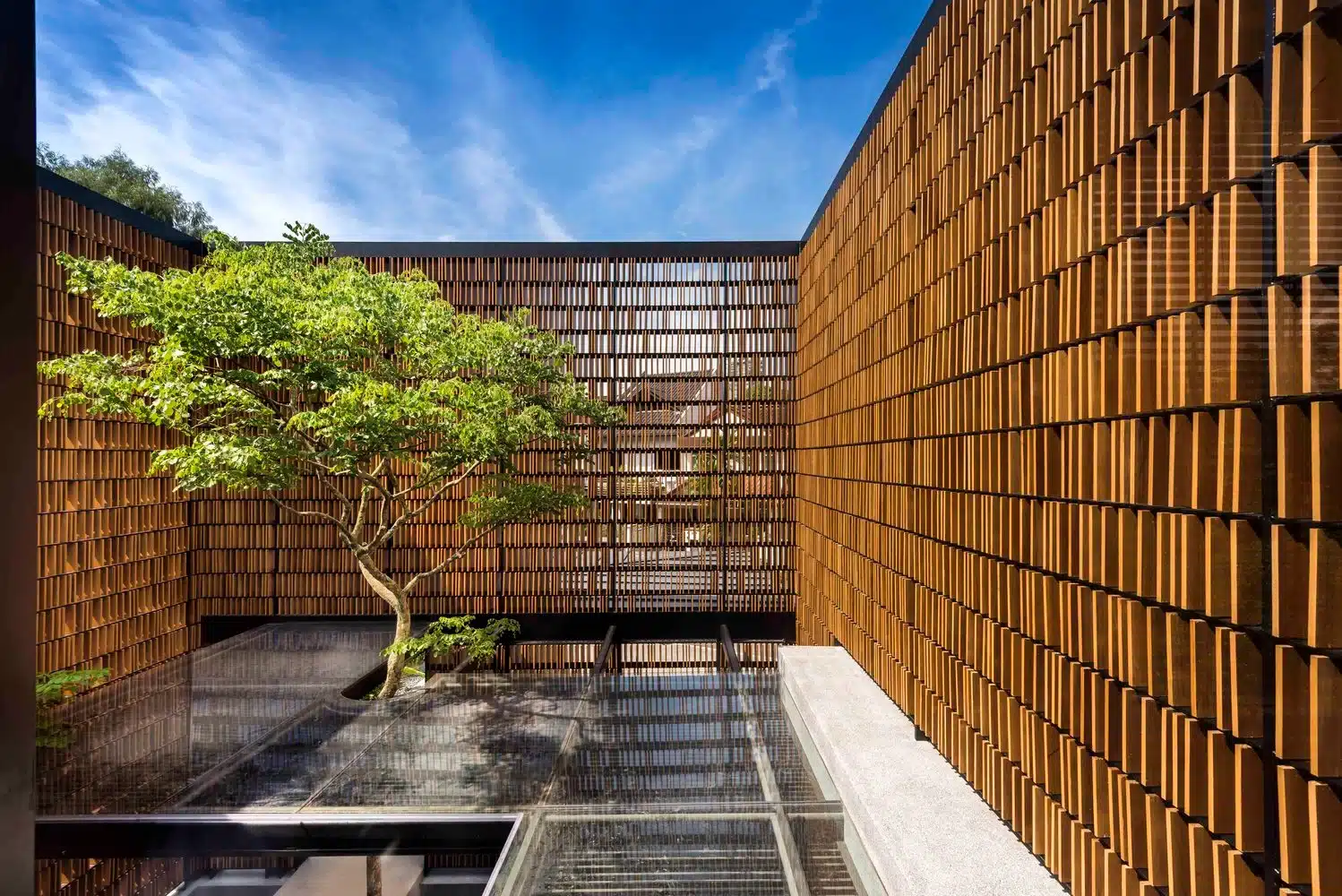Vernacular architecture is a fascinating subject that embodies the unique relationship between people and their environment. It represents building styles and techniques that develop organically over time, shaped by local traditions, cultures and materials. Unlike formal architectural practices, which often adhere to strict rules and styles, vernacular architecture is based on practicality and functionality. It tells the story of communities, their history and their adaptation to the landscape around them.

Description and Specifications
In essence, vernacular architecture refers to buildings constructed by local builders using traditional methods, often without the influence of professional architects. These buildings are typically characterized by their sensitivity to local climate, culture and available resources. For example, in hot and arid regions, houses may have thick walls and small windows to keep interiors cool, while in colder climates buildings may have steep roofs to retain snow and maximize warmth.
One of the defining characteristics of vernacular architecture is the use of local materials. This not only ensures that buildings are appropriate to their surroundings, but also reinforces a sense of place. Designs can vary significantly from one region to another, reflecting different cultures and natural landscapes around the world.
Historical Context
Vernacular architecture has deep historical roots, often dating back to the first human settlements. As communities formed, they began to create structures that met their immediate needs while responding to their environment. In many cases, these buildings were constructed using knowledge passed down through generations and gradually evolved over time.
Throughout history, vernacular architecture has adapted to societal changes such as migration, industrialization and urbanization. Traditional building methods have often survived longer in rural areas than in urban environments where modern materials and techniques have taken precedence. In recent years, however, interest in local practices has been growing as people seek to reconnect with their heritage and find sustainable building solutions.
The Importance of Regional Materials
The choice of materials in vernacular architecture is a very important aspect that significantly influences the design and functionality of buildings. Local materials are not only more accessible, but also more in tune with the environment. For example, areas where timber is abundant are dominated by wooden structures, while in areas rich in stone you will find sturdy stone buildings that can stand the test of time.
The use of local materials often enhances the aesthetic appeal of buildings and creates a visual harmony with the landscape. Moreover, these materials are often more sustainable, requiring less energy for transportation and processing. This connection to local resources fosters a sense of identity and pride within communities, as buildings reflect both the environment and the cultural history of the place.
Sustainability in Local Design
Sustainability is a key principle in vernacular architecture. Many traditional building practices emerged out of necessity and have naturally led to designs that conserve energy and resources. For example, the orientation of buildings, the placement of windows and the use of shaded courtyards are strategies that increase natural ventilation and reduce reliance on artificial heating and cooling systems.
Incorporating sustainable practices of vernacular architecture into modern design can help address contemporary challenges such as climate change and resource depletion. By learning from the past, architects and builders can create structures that are not only environmentally friendly but also culturally appropriate. This approach emphasizes the importance of local knowledge and practices in building a sustainable future.
Overview of Clay Use
Clay has played a vital role in vernacular architecture in various cultures. Its versatility makes it an ideal material for creating durable structures. Used in many regions to make bricks, tiles and adobe, clay provides an excellent thermal mass that helps regulate indoor temperatures.
In places like Mexico and parts of Africa, adobe houses are an excellent example of how clay can be used effectively. Made from sun-dried adobe bricks, these buildings are not only sustainable, but also offer a unique aesthetic that reflects the cultural heritage of the region.
The use of clay in construction highlights the creativity of communities in using locally available resources to create functional and beautiful spaces. As interest in sustainable building practices grows, clay is experiencing a resurgence, inspiring contemporary architects to explore its potential in modern designs.
The result is a rich tapestry woven from the threads of local architectural culture, environment and history. By understanding and appreciating these traditional practices, we can find inspiration to build a more sustainable and culturally resonant future.
Properties of Clay
Clay is a fascinating material that has been used by humans for thousands of years, from pottery to construction. Its unique properties make it invaluable in various fields, especially architecture and design. Understanding the properties of clay helps us to appreciate its versatility and the role it plays in our built environment.
Physical Properties
Clay is a fine-grained natural soil material that is plastic when wet and hardens when dry. Its particles are incredibly small, usually less than two micrometers in diameter, which gives clay its distinctive texture. This fine particle size contributes to its plasticity, allowing it to be molded into a variety of shapes, which is why it is a favorite among potters and sculptors.
When dry, clay can take on a range of colors, influenced by its mineral content and the conditions under which it was formed. This variability allows for a wide range of aesthetics in both art and architecture. Clay is also lighter than many building materials, making it easier to transport and work with.
Understanding these physical properties allows architects and builders to harness the potential of clay, using it in everything from tiles to bricks and creating structures that are not only functional but also visually appealing.
Thermal Properties
One of the most interesting aspects of clay is its thermal properties. Clay has a high thermal mass, meaning it can absorb and store heat. This makes it an excellent material for energy-efficient buildings because it helps regulate indoor temperatures. During the day, clay absorbs heat from the sun, keeping spaces warm, and releases it at night, providing a more balanced and comfortable environment.
The thermal properties of clay have been utilized for centuries in traditional architecture, such as adobe buildings found in desert regions. These buildings stay cool during the scorching day and warm at night, demonstrating how clay can increase comfort and reduce dependence on artificial heating and cooling systems. This not only benefits the occupants, but also contributes to energy savings and sustainability.
Aesthetic Qualities
Clay’s aesthetic qualities are perhaps one of its most famous characteristics. Its natural tones, ranging from earthy reds and browns to soft grays and whites, allow it to blend harmoniously with a variety of landscapes and architectural styles. Whether used in decorative tiles, bricks or sculptural elements, clay adds a tactile dimension that is both inviting and grounding.
In contemporary architecture, clay is often used in innovative ways, such as rammed earth walls or clay plasters, which provide not only visual warmth but also a connection to nature. Organic textures and colors can evoke feelings of comfort and familiarity, making spaces feel more human-centered. Artists and architects appreciate clay’s ability to be artistically shaped while retaining its functional properties, resulting in structures that are as beautiful as they are practical.
Durability and Longevity
Clay can be incredibly durable when fired and treated properly. Clay bricks and tiles are known for their longevity, often lasting for decades or even centuries with minimal maintenance. Their resistance to weathering and decay makes them a reliable choice for both exterior and interior applications.
Many ancient structures, such as the Great Wall of China and the ancient city of Petra, testify to the durability of clay. Made from clay-based materials, these structures have stood the test of time, demonstrating not only the strength of the material, but also the skill of the artisans who worked with it. By choosing clay as the primary building material, architects and builders can create lasting structures that honor history while meeting modern needs.
Environmental Benefits
Clay is a natural material that offers several environmental benefits. Its abundant availability and low-impact extraction processes make it a sustainable choice for construction. Unlike many synthetic materials, clay does not release harmful chemicals during production or use, contributing to healthier indoor environments.
Furthermore, the thermal mass properties of clay can significantly reduce energy consumption in buildings, promoting energy efficiency. This is in line with the growing emphasis on sustainable design practices in architecture. By incorporating clay into modern buildings, architects can create eco-friendly structures that minimize the carbon footprint and at the same time improve the quality of life of the building’s occupants.
In conclusion, the properties of clay make it a versatile and invaluable material in architecture. Its physical properties, thermal properties, aesthetic qualities, durability and environmental benefits all contribute to its enduring appeal. As we continue to explore innovative ways of using clay, it remains a testament to the harmony between human creativity and the natural world.
Clay in Different Cultures
Clay has been a fundamental material in architecture in various cultures throughout history. Its versatility, abundance and workability have made it a preferred choice for the construction of homes, public buildings and monuments. This chapter explores how different civilizations used clay, demonstrating its adaptability and importance in shaping architectural practices around the world.
Adobe in Ancient Civilizations
Made from a mixture of clay, sand, straw and water, adobe has been a cornerstone of construction since ancient times. In Mesopotamia, one of the oldest known civilizations, adobe was used to build impressive structures, including ziggurats and temples. The manufacturing process was relatively simple and allowed communities to produce durable bricks that could withstand the elements.
These adobe structures not only provided shelter, but also reflected the social and religious values of the time. For example, the famous ziggurats served as temples, symbolizing the connection between the earth and the heavens. The adobe architecture of the Indus Valley Civilization exhibits similar ingenuity, with extensive urban planning and sophisticated drainage systems.
Today, adobe remains important as sustainable building practices gain popularity. Modern architects often take inspiration from these ancient techniques and combine them with contemporary design to create eco-friendly homes.
Adobe Buildings in America
Adobe, a building material made from sun-dried earth, has been an integral part of architecture throughout the Americas, particularly in the southwestern United States and parts of Latin America. The Pueblo peoples of New Mexico are known for their adobe houses, characterized by thick walls and flat roofs. These structures are designed to provide thermal mass, keeping the interiors cool during the day and warm at night.
The adobe construction reflects a deep understanding of the local environment. The sourcing of materials from the earth makes adobe houses sustainable and harmoniously integrated with their surroundings. This practice has been adopted by contemporary architects seeking environmentally friendly alternatives to traditional building materials.
In Mexico, adobe is also prominent in colonial architecture, with its vibrant colors and intricate detailing referencing the region’s rich cultural heritage. Today, adobe buildings continue to inspire modern homes, blending traditional methods with new technologies to achieve energy efficiency.
Adobe Houses in England
Adobe, a natural building material made from clay, sand, straw and water, has a long history in England. Adobe houses are known for their thick walls, which provide excellent insulation. This architectural style has become particularly popular in the southwest of England, where the abundance of clay makes it an accessible choice for construction.
The construction of cob houses requires skilled craftsmanship, as the mixture must be kneaded and shaped by hand. This process not only strengthens the bond between builder and material, but also creates unique, organic forms that blend seamlessly into the landscape. Adobe houses often have rounded corners and thick walls that give them a distinctive character.
In recent years, there has been a resurgence of interest in cob buildings, driven by the desire for sustainable living. Modern cob houses combine contemporary design elements while staying true to traditional techniques and showcasing the enduring charm of this ancient material.
African Huts and Traditional Techniques
Throughout Africa, clay has been used to build traditional huts that reflect the continent’s diverse cultures and environments. These huts often have rounded shapes with thatched roofs designed to withstand harsh climates. The use of clay in construction varies greatly, with different regions using distinctive techniques and styles.
In many communities, the construction of clay huts involves the joint efforts of family and neighbors and strengthens social bonds. Walls are typically made from a mixture of clay and other local materials such as grass or animal dung, which increases durability and insulation. The designs often include cultural symbols and artistic elements that tell stories and convey communal identity.
Contemporary architects in Africa are increasingly turning to these traditional techniques for inspiration. By blending modern design with local methods, they are creating buildings that honor cultural heritage while responding to modern needs. This approach not only promotes sustainability, but also empowers local communities by valuing their architectural history.
Asian Clay Architecture
In Asia, clay has played an important role in architectural traditions and its use varies greatly across cultures and climates. In China, for example, rammed earth techniques have created magnificent structures that have stood the test of time. The Great Wall of China, built using rammed earth, demonstrates the strength and durability of this ancient method.
In Southeast Asia, clay is often used in the construction of temples and pagodas, where intricate carvings and colorful glazes reflect the rich artistic traditions of the region. The use of clay tiles for roofing not only adds aesthetic value, but also provides practical benefits by keeping interiors cool in tropical climates.
Modern Asian architects continue to explore the potential of clay, integrating it into contemporary designs that embrace innovation while honoring tradition. This fusion of old and new not only preserves cultural heritage, but also promotes sustainable building practices that align with the needs of today’s society.
As a result, clay has profoundly influenced architectural practices across cultures, demonstrating its versatility, sustainability and ability to bring communities together. As we move towards a more environmentally conscious future, the lessons learned from these different practices can guide us in creating buildings that are both functional and in harmony with the natural world.
Techniques for Working with Clay
Clay is a versatile material that has been used in construction and art for thousands of years. Its workability allows for creative expression and practical applications in fields ranging from pottery to architectural design. Understanding the techniques of working with clay is essential for anyone interested in harnessing its potential, whether for artistic projects or building structures. This chapter explores various methods and innovations in the field of working with clay, offering insights into traditional and contemporary practices.
Traditional Handmade Methods
Traditional hand-building methods are some of the oldest techniques used in clay work, allowing artisans to create unique pieces without the need for complex machinery. These methods include pinch pots, rolling and slab making.
Pinch pottery involves shaping the clay by squeezing it with the fingers, offering a tactile approach that connects the maker to the material. This technique is often used to create small vessels or decorative items. Rolling, on the other hand, entails rolling long, snake-like pieces of clay that are stacked and flattened to create larger structures. This method is particularly effective for creating pottery or sculpture, as it allows for complex designs and a variety of shapes.
Slab making involves rolling flat sheets of clay and cutting them into specific shapes, which are then combined to create three-dimensional objects. This technique is valued for its versatility and is widely used in both pottery and architectural applications. Each of these methods showcases the intimacy of working with clay, highlighting the artist’s hands and creativity in the process.
Using Molds and Molds
The use of molds and molds represents a significant advance in clay making techniques. Molds refer to temporary structures used to shape clay as it dries or hardens. This method allows the creation of uniform shapes, making it easier to achieve specific architectural designs.
Molds can be made from a variety of materials, such as plaster, silicone or metal, and enable artisans to reproduce complex details consistently. For example, using a mold to create tiles can streamline the production process while maintaining high precision and quality. Moreover, molds allow for more experimentation with textures and patterns, enhancing the visual appeal of clay objects.
These techniques are particularly useful in large-scale projects, such as creating prefabricated clay panels for building facades. Architects can achieve both aesthetic and functional goals using molds, making clay a viable option for modern construction.
Firing and Finishing Techniques
Firing is a crucial step in the clay processing process that transforms raw clay into durable ceramic materials. Firing involves heating the clay in a kiln at high temperatures, which causes chemical changes that strengthen the material. In this step, where the magic happens, the clay hardens and can no longer be reshaped, making it suitable for a variety of applications.
There are different firing techniques, such as bisque firing and glaze firing. Bisque firing prepares the clay for glazing by removing moisture and making it more porous. Glaze firing, which takes place after a layer of glaze is applied, adds color and a glass-like finish to the surface, enhancing both aesthetics and functionality.
Finishing techniques also play an important role in the final appearance of clay products. Techniques such as glazing, where the surface is polished to a smooth finish, can create beautiful, reflective surfaces. In addition, surface treatments such as underglaze or painting allow for greater customization, allowing artists to express their individual style.
Innovations in Clay Making
Innovations in clay construction have emerged as architects and builders seek sustainable and efficient building materials. One notable development is the use of 3D printing technology to create clay structures. This method enables precise designs and rapid prototyping, making it possible to create complex shapes that were previously difficult to achieve with traditional methods.
Another innovation is the development of lightweight clay composites that combine clay with other materials to improve structural integrity and thermal efficiency. These materials are particularly valuable in eco-friendly construction as they reduce environmental impact compared to traditional building materials.
Moreover, researchers are exploring the use of clay in combination with natural fibers to create bio-based materials that offer both strength and sustainability. These innovations not only expand the possibilities of clay construction, but also align with the growing demand for environmentally responsible building practices.
Maintenance and Repair Applications
The maintenance and repair of clay structures is essential to maintain their integrity and aesthetic appeal. Unlike other materials that require extensive maintenance, clay can be relatively low maintenance, but does require some care.
Regular inspections can help detect cracks or wear, enabling timely repairs to be made. Small cracks can usually be filled with a mixture of clay and water, while larger damages may require more extensive patching or even rebuilding sections. Understanding the natural properties of clay, such as its sensitivity to moisture, can guide maintenance practices to prevent future problems.
In addition to repairs, cleaning clay surfaces can improve their appearance. Using gentle cleaners and avoiding harsh chemicals is essential to prevent damage to the surface. By taking a proactive approach to maintenance, clay building owners can ensure the longevity of their structures and continue to enjoy the beauty and functionality of this extraordinary material.
Ultimately, working with clay encompasses a rich array of techniques that reflect both tradition and innovation. From handmade methods that connect artisans to their craft to modern developments that push the boundaries of construction, clay remains a vital material in our architectural landscape. Understanding these techniques not only enhances the value of clay as a material, but also inspires future explorations in creativity and sustainability.
Clay Architecture Case Studies
Clay architecture has a rich history and continues to play a vital role in many cultures around the world. From timeless ancient structures to modern interpretations that embrace sustainability, clay buildings demonstrate the versatility and beauty of this natural material. In this research, we will examine a few notable case studies that highlight the various applications of clay in architecture.
Great Mosque of Djenné
The Great Mosque of Djenné in Mali is a stunning example of adobe architecture and is considered one of the largest mud buildings in the world. Built in the 13th century, this mosque is an architectural marvel showcasing the traditional Sudanese style, characterized by soaring minarets and intricate decorative motifs. The mosque is built entirely of sun-baked adobe bricks known as adobe, which not only ensures structural integrity but also regulates the temperature, creating a comfortable environment for worshippers.
One of the most fascinating aspects of the Grand Mosque is the annual restoration festival known as Crepissage. Community members come together to renovate the mosque’s exterior, mixing mud with straw and water to create a fresh and resilient surface. This activity is not just about maintenance; it fosters a strong sense of community and cultural identity, with everyone from children to the elderly participating.
The mosque’s design reflects the climate of the region, with thick walls that insulate against heat and rain. Its aesthetic appeal combined with its cultural significance has made it a UNESCO World Heritage Site, attracting visitors from all over the world who want to witness its splendor.
Mud Houses of Mali
Beyond the Great Mosque, Mali’s mud houses represent a remarkable tradition of earthen construction common to many West African societies. Often clustered together in villages, they come in a variety of shapes and sizes, with domed roofs and intricate facades adorned with decorative motifs.
Malian mud houses are built primarily from local materials such as clay, straw and water, making them sustainable and environmentally friendly. The construction process involves shaping the mud into bricks and letting them dry in the sun. Once assembled, these houses are highly durable, able to withstand the region’s harsh weather conditions.
They are cool and comfortable inside, thanks to thick walls that insulate against heat. The layout of the houses is often communal, with family members sharing spaces and promoting a sense of togetherness. Mud houses also reflect the cultural practices and social structures of the communities, making them more than just shelter; they are living representations of identity, tradition and resilience.
Acoma Pueblo Cliff Dwellings
Located on a sandstone mesa in New Mexico, Acoma Pueblo is one of the oldest continuously inhabited communities in North America. The cliff dwellings date back more than 1,000 years and are built of adobe, a testament to the ingenuity of the Acoma people. This unique location not only provides natural defense, but also offers breathtaking views of the surrounding landscape.
The architecture of Acoma Pueblo is characterized by multi-storey buildings that blend harmoniously with the rocky terrain. The use of adobe provides excellent insulation, keeping the interiors cool in summer and warm in winter. The village is organized around a central plaza that serves as a gathering place for ceremonies and community events.
Acoma Pueblo is not just a historic site; it is a living community where traditions are preserved and passed down through generations. Residents continue to practice traditional pottery, weaving and other crafts, keeping their cultural heritage alive. This connection to the land and their architectural heritage demonstrates the deep relationship between the Acoma people and their environment.
Earth Houses of China
In southern China, Tulou, or earth houses, are remarkable examples of communal living and earthen architecture. Built primarily by the Hakka people, these large, fortified structures are made of rammed earth and can accommodate dozens of families. Their circular or square design creates a unique social dynamic with communal spaces for cooking, gathering and celebrating.
Tulou is not only functional but also represents a harmonious relationship with nature. The thick earth walls provide insulation and protection from the elements, offering a stable living environment. The construction process involves the compaction of local soil mixed with straw and other materials, which is both environmentally sustainable and culturally significant.
Today, the Tulou are recognized as a World Heritage Site by UNESCO, celebrating their architectural uniqueness and cultural significance. They serve as a reminder that sustainable building practices can create strong, resilient communities that thrive in harmony with their surroundings.
Contemporary Examples of Clay Architecture
In recent years, there has been a resurgence of interest in clay architecture, with contemporary architects exploring innovative designs that embrace sustainable materials and techniques. Projects around the world are redefining the use of clay, incorporating it into modern aesthetics while honoring traditional methods.
The Earthship movement, for example, promotes the use of recycled materials, including adobe, to create self-sufficient homes that are off-grid and eco-friendly. These buildings not only utilize local resources, but also promote a lifestyle in harmony with nature.
In addition, architects are experimenting with clay in urban settings, creating stunning facades and interiors that blend seamlessly with the surrounding environment. The adaptability of clay allows for creative expression while maintaining ecological balance.
As society increasingly understands the importance of sustainability, clay architecture is emerging as a viable solution that combines ancient techniques with modern needs. This ongoing evolution of clay structures demonstrates its potential and enduring relevance in shaping the future of architecture in a sustainable way.
In examining these case studies, we see that clay architecture is not just a construction method; it is a profound expression of culture, community and resilience, bridging the past, present and future.
The Future of Clay in Architecture
Clay has been a fundamental building material for thousands of years, offering durability, versatility and a unique aesthetic. Looking to the future, clay’s potential in architecture continues to evolve through innovations in materials science, technological integration, sustainability efforts and community engagement. This research explores how clay can reshape our architectural landscape while addressing contemporary challenges.
Innovations in Materials Science
In recent years, materials science has made significant strides, changing our understanding and practice of the use of clay in architecture. Researchers are experimenting with various clay composites, improving their properties to meet modern building standards. Innovations such as lightweight clay bricks and self-healing clay materials are being developed to improve structural integrity and longevity.
Furthermore, the advent of 3D printing technology has opened up new avenues for the use of clay. Architects can now create complex designs that were previously impossible, allowing for greater creativity and customization in construction. This technology also minimizes waste, as structures can be printed with precision and material use can be optimized. These developments are not only making clay a more viable option for contemporary buildings, but also reintroducing us to this ancient material in innovative ways.
Integrating Clay with Modern Technologies
The integration of clay with modern technologies is reshaping architectural practices. Smart building systems can be combined with clay structures to improve energy efficiency and occupant comfort. For example, researchers are developing clay materials that can regulate temperature and humidity, creating a more comfortable indoor environment without relying heavily on mechanical systems.
Furthermore, the use of sensors embedded in clay walls can monitor structural health, alerting builders and owners to potential problems long before they become serious. This synergy between traditional materials and the latest technology represents a shift towards smarter, more responsive architecture. It promotes a harmonious relationship between heritage and modernity, enabling buildings that not only honor the past but also embrace future innovations.
Clay’s Role in Sustainable Development
Sustainability is a critical issue in architecture today and clay plays a vital role in promoting environmentally friendly building practices. As a natural and abundant material, clay can be sourced locally, reducing transportation emissions and supporting local economies. Its thermal mass properties also contribute to energy efficiency, helping to regulate indoor temperatures and reducing the need for artificial heating and cooling.
Furthermore, clay is biodegradable and can be recycled or reused at the end of a building’s life, thus minimizing waste. Projects involving clay are often in line with the growing movement towards sustainable architecture, emphasizing its low environmental impact. For example, in regions where clay is readily available, architects are designing homes that blend seamlessly into the landscape, using local materials to create structures that are both beautiful and ecologically responsible. This approach not only preserves local heritage, but also fosters a sense of community identity.
Challenges Faced by Clay Architecture
Despite its many benefits, clay architecture faces several challenges that need to be addressed for wider adoption. One key barrier is the perception of clay as a less durable option compared to modern materials such as steel and concrete. While innovative practices and composites can improve the durability of clay, convincing stakeholders of its long-term viability remains a challenge.
In addition, building codes and regulations often favor traditional materials, which can discourage the use of clay in new projects. Architects and builders must overcome these bureaucratic hurdles when advocating for the inclusion of clay in modern construction. There is also the issue of skilled labor; traditional clay construction techniques are increasingly rare, and education and training are needed to ensure that these skills are passed on to future generations.
Community Engagement and Education
Engaging communities in the use of clay in architecture is crucial for the future of clay. Educational initiatives that emphasize both the environmental and cultural benefits of clay can inspire the next generation of architects and builders. Workshops and community projects can encourage hands-on experience with clay, fostering a deeper appreciation for the material.
Community involvement in the design process can lead to more culturally relevant and meaningful buildings. When local residents participate in the creation of their built environment, community ties are strengthened and ensure that architecture reflects their values and needs. This collaborative approach not only enhances the aesthetic and functional qualities of buildings, but also revitalizes interest in clay as a sustainable and innovative material. By prioritizing community engagement and education, the future of clay in architecture can be both rich and inclusive, paving the way for a more sustainable and resilient built environment.
Discover more from Dök Architecture
Subscribe to get the latest posts sent to your email.



